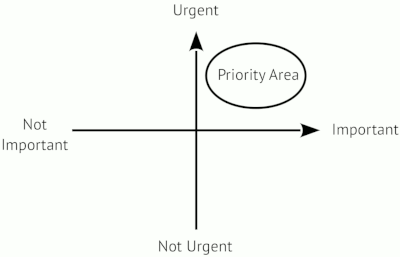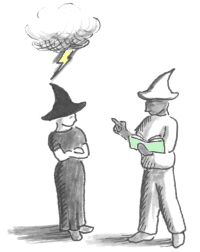4.4 - (During the workshop) Flexibility and rough consensus - Week 2
Example 1: Agenda hacking and break-out sessions by Aspiration Tech / CC BY-SA
Agenda Hacking
Aspiration follows a methodology for dynamically generating agenda topics that is designed to give all participants equal input while also setting a collaborative, communal tone for the proceedings.
Our approach is intentional in two regards:
- Making topic definition a collective exercise rather than an individual exercise
- Allocating session topics iteratively, per time slot, rather than monolithically at the beginning of the event.
In order to generate the information needed to do the above, we follow an "agenda hacking" process early on the first day of each event.
In this process, participants first work in small groups to generate a thorough list of topics and questions they want to discuss, recording each item on a separate "Post-It" or "Stickie" note. Then participants collaboratively aggregate and sort items into topical clusters.
Read the details of the process.
Break-out sessions
Break-outs sessions are the heart of event sharing and interaction. Once an initial sense of community has been established by morning circle and other group exercises, break-out sessions allow for rich collaboration between specific participants. It is presumed that each break-out session has one or more facilitators to guide the dialog, but these individuals should see themselves not as presenters but rather catalysts of constructive exchange and discovery. If the person leading a breakout does not have facilitation experience, you may want to offer to pair them up with a someone who does have experience to help share the load. Read more.
Most breakout sessions follow a "report back" model, where participants reconvene between sessions and each group reports back to the larger group with a very short summary of key points and "ah-ha's". To that end:
- Please select someone in the breakout circle to be the note taker, other than the facilitator. It is extremely preferable that notes be taken on a laptop or other computer in order to expedite sharing and subsequent editing
- Please leave a few minutes at the end of the session to decide as a group on what will be reported back
- If using a collaborative documentation tool such as a wiki, make sure the notes taken are posted to the wiki as soon as possible, hopefully before reconvening and doing report-backs.
Example 2: Seeds for Change
Here are some more tools for prioritisation, decision making and helping workshops participants to set the agenda of the workshop.
Ranking
This is a great technique for using in small groups. Write each option on a card or post-it note and give each group a full set of cards/notes. Set a time limit and ask the groups to rank the options, or reduce the options to, say, three. Having a facilitator in each small group will help. It's also helpful to set out clear criteria at the start - for example:
“You've got 15 minutes. We're looking for options that need to be done most urgently, are most important, and yet realistic with our skill level. Also we've only got a week to make it happen, so please think about what we can realistically achieve in the time available.”
Urgent/Important grid

A classic time-management tool that can be applied to group prioritisation! You can use this tool on paper, or as a ‘Spectrum Line'. The group ranks ideas according to their urgency and importance:
2, 4, 8 consensus
This exercise will take time, but will help a group reach a decision that everyone can live with! Probably not one you'd use every meeting, but useful for the really important discussions. It's usually best to impose tight time limits at every stage of this discussion or it can take ages!
- Start in Pairs. Each pair discusses the list of options and is asked to agree their top three priorities.
- Each pair then comes together with another to form a group of four. The two pairs compare their lists of top three priorities and agree on a joint top three.
- Each group of four comes together with another to form a group of eight. Again, each group takes its two lists of priorities and reduces it to an agreed top three.
- Repeat until the whole group has come back together. Hopefully three clear priorities have emerged. In the worst case scenario the group has six top priorities and may need to reduce it still further through facilitated discussion or another prioritisation tool.
Six thinking hats

This tool encourages a group to look at a situation from a new angle. Each 'hat' represents a different way of looking at something. There are a number of ways to do this exercise. For example, individuals within the group can wear different hats whilst the group discuss an issue. Another alternative is that everyone in the group can try on one of the 'thinking hats' for a while, then everyone can put on another one. As facilitator you may want to think about the order in which the group wear the different 'thinking hats'. Below is one possible order for a creative problem solving process. The roles the 'hats' bring give you a chance to thoroughly examine every option and to prioritise or choose the best one(s).
- White hat: White hatted people concentrate on the facts - what information and knowledge do you know about the situation? What can you learn about the situation from this information? What info is missing? Can you plug the gap? If not can you take it into account when discussing the situation? What can you learn from past trends?
- Green hat: Green hat people think creatively in a no-criticism, freeform thinking kind of way.
- Red hat: Red hats are the emotional input of the discussion. They allow themselves to be intuitive and act as much on hunches as fact. They are sensitive to the emotional responses of others in the group.
- Black hat: Black hats live under a black cloud! They should think pessimistically. Look for the flaws in the plan, find the obstacles!
- Yellow hat: Yellow hats bask in sunlight - they should think positively looking for the value in every possibility. What benefits does it bring?
- Blue hat: The blue hat is worn by the facilitator(s). They concentrate on process, calling on the other hats to add in their thinking as and when it's appropriate and making sure that each option is scrutinised from all perspectives. They are neutral, helping the group achieve it's task without trying to shape the decision.
This tool actively seeks out the optimistic analysis, the pessimistic analysis etc., so every idea is thoroughly tested and when the decision is made, it's made on the basis of a creative and thorough process.
Facilitating prioritisation tools – a word of warning
It’s easy to deviate from your process and get bogged down in endless discussion. What starts as an attempt to briefly list the pros and cons of each option can easily be diverted into a full scale hour long discussion on just the first option. Be wary of this, and stick to your chosen process. Only if the process itself is clearly not working should you abandon it and go for another!
Prioritisation, by definition, involves choosing some ideas over others. This means that throughout your prioritisation exercise you'll be discarding ideas. There are 2 possible pitfalls that you can easily avoid:
-
The first is throwing away an idea too early, deciding later that you were too hasty, but not having written it down anywhere. So always note down ideas and keep hold of the notes until the decision is finally made. If new ideas arise, put them in the parking space.
-
Secondly, people are usually more attached to the ideas that they thought of, so if you're facilitating, be wary of throwing ideas away too lightly and offending people. It can help to remind the group regularly that you're looking for ideas that are best for the group as a whole. You can also ask permission to discard ideas, and thank people for being willing to put aside their personal preferences.
Task: Build flexibility into your agenda
For each example above, note what pieces you will build into your workshop. How will you maintain flexibility in running your workshop? What do you think of the rough consensus/break-out model? Will you use it?
Post in the comments below.


